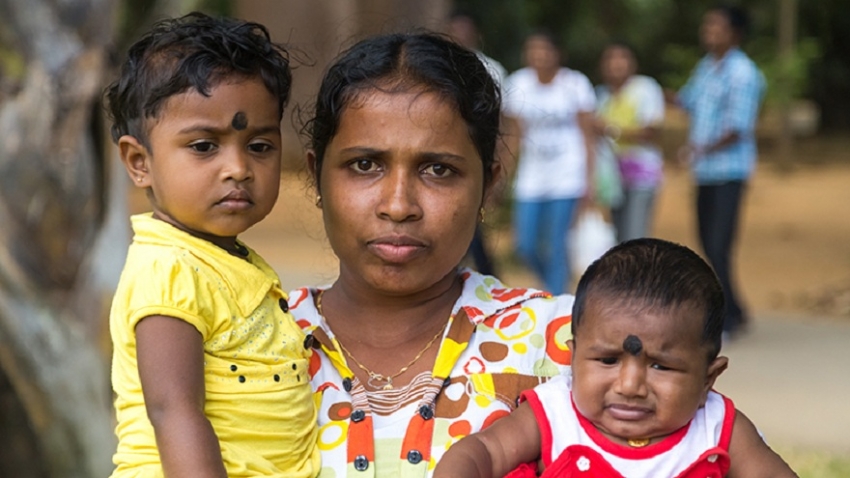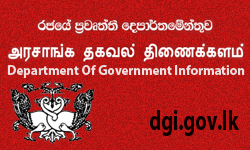Sri Lanka’s rise to healthy nationhood
Prof. Anula Wijesundara President Sri Lanka Medical Association (SLMA)
World Health Organization (WHO) Director General Dr. Tedros Adhanom Ghebreyesus proclaimed on World Health Day, April 7, 2018, that the Sri Lankan health service is one of the best not only in Asia but in the world. He stated that the reason behind the high-quality service of health in Sri Lanka was the free availability with clear guidance given to the health services by successive governments of the country. Speaking on this occasion, Dr. Poonam Khetrapal Singh, the WHO Director for the Asian region, congratulated Sri Lanka on achieving some of the sustainable development goals well ahead of the target set for 2030.
Sri Lanka has good health indicators in many areas.
(1.) Achieved high life expectancy (72M/78F); (2.) Low maternal and child mortality; (3.) Elimination of major diseases such as malaria, polio, diphtheria, neonatal tetanus and whooping cough with excellent vaccine coverage; and (4.) Lower levels of leprosy, measles, filariasis and congenital rubella etc.
Free education was introduced to Ceylon in 1942 followed by free health services in 1951. Health indices show that we are world leaders in achieving 100 percent immunisation and also achieved the best breastfeeding practices in the world. We have a literacy rate of 93.8 percent and life expectancy of 74.9.
What then are the challenges we face in achieving universal health coverage in Sri Lanka?
The challenges we face at present are
(1.) reduction of the burden of non-communicable diseases (NCD); (2.) reduction of the burden of tobacco, alcohol and dangerous drugs; (3.) reduction of the menace of dangerous drugs in Sri Lanka; (4.) reduction of the incidence of deliberate self-harm/suicides in Sri Lanka; (5.) controlling the morbidity and mortality from dengue fever; (6.) elimination of HIV/AIDS by 2020; (7.) reduction of the incidence of fatal road traffic accidents; (8.) maintenance of malaria-free status in Sri Lanka; (9.) facing the socio-economic challenges of our ageing population; and (10.) reduction of the burden of chronic kidney disease unknown (CKDu) or chronic interstitial nephritis in agricultural communities (CINAC).
1. Reducing the burden of non-communicable diseases
What are non-communicable diseases (NCDs)?
They are chronic long-term diseases which can be controlled but cannot be cured definitely. They are cardiovascular disease (heart attacks, high blood pressure and high cholesterol), diabetes mellitus, chronic lung diseases, carcinoma and strokes.
What is the importance of NCDs?
They are the number one cause of death and disability globally. In Sri Lanka, NCDs account for over 70 percent of all hospital deaths. Heart attacks are the leading cause of death in Sri Lanka, followed by carcinoma and strokes.
One in four adults in Sri Lanka has high blood pressure but 50 percent are untreated; One in five adults in urban areas has diabetes mellitus; One in three adult women is obese in urban areas; and one in four adult males is obese in urban areas.
How can NCDs be prevented?
Prevention is always better than cure. Prevention of NCDs must commence from childhood. A healthy diet of vegetables, fruits, protein, starch and fat in the correct proportion and vitamins and minerals are essential. Engagement in physical activity is essential to maintain an ideal Body Mass Index(BMI). Adequate rest and sleep, avoidance of stress as far as possible and stoppage of smoking and alcohol are essential.
Sri Lanka has the political will and the commitment to reach the sustainable development goals (SDG) of the universal health coverage and reduce the deaths due to NCDs by one-third in 2030. The government has provided its people with 75 percent of universal health coverage. Hence, positive measures are being taken to reduce death and disability from NCDs. It has 12 years to march forward to achieve these goals and save the future generation of Sri Lankans from NCDs.
Magnitude of diabetes
Out of our population of 22 million, 1.2 million (five percent) has diabetes. Annually 16,000 deaths occur in Sri Lanka directly due to consequences of diabetes. In urban areas, the incidence of diabetes is much higher (10 percent). The challenge is to diagnose diabetes early, treat adequately and prevent worst complications of diabetes such as heart attacks, chronic kidney disease and peripheral vascular disease leading to gangrene.
2. Reducing the burden of tobacco and alcohol
The national level of tobacco smoking among the males in Sri Lanka is 33.4 percent. Fortunately, the incidence among women is less than 0.5 percent. Tobacco is the single biggest cause of deaths worldwide resulting in seven million deaths globally via direct and passive smoking effects. In Sri Lanka, smoking causes approximately 20,000 deaths annually from lung cancer, ischemic heart disease and chronic bronchitis, directly related to smoking.
The burden of smoking has been reduced in Sri Lanka by the introduction of very high tax band on tobacco sales exceeding 70 percent which is more than the WHO guidelines. The introduction of plain packaging and graphic warning covering up to 70 percent of the packet has also been beneficial. The restriction of the sale of loose cigarettes in the near future would be most helpful.
In Sri Lanka, the incidence of smoking has decreased overall especially among the professionals and the higher social strata. However, smoking remains unacceptably high among low socio-economic groups. Thus, smoking worsens health inequality and exacerbates poverty in this group. We must continue to address the public about the hazards of smoking.
Burden of alcohol dependence in SL
Alcohol dependence is a major health and social problem in Sri Lanka. The magnitude of the problem can be assessed by the following information.
(1.) Around 18,000 men die annually in Sri Lanka directly or indirectly due to alcohol consumption; (2.) Forty percent of Sri Lankan males consume alcohol; (3.) In low-income families, one-third of their family income is spent on alcohol; (4.) The per capita consumption of alcohol in Sri Lanka is 3.5 litres. This is the highest consumption among SAARC countries; (5.) The per capita consumption among males alone is 7.4 litres; and (6.) Government expenditure on diseases related to alcohol consumption is Rs. 140 billion annually.
(Source: Chairman’s report National Alcohol and Tobacco Authority, 2017)
Consequences of alcohol dependence
This article will not deal with the medical, psychological and social consequences of alcoholism which are well known. However, road traffic accidents under the influence of alcohol, violence, homicide and crimes committed under the influence of alcohol must be severely dealt with. Sexual harassment and violence against women and children is worthy of special mention. These are particularly prevalent in the rural areas of Sri Lanka.
Reducing the burden of alcohol dependence
(1.) Stop the issuance of new liquor licences immediately; (2.) Cancel all liquor licences issued to outlets situated within half a mile radius of schools and places of worship; (3.) Increase the minimum age for purchase of alcohol to 21 years; (4.) Restrict the hours and days that alcohol is sold in outlets; (5.) Stop all tax concessions to distilleries in the state and private sectors; (6.) Revise the excise policy of the government and prevent the reduction of the price of alcohol at all cost; and (7.) Encourage health education programmes advising the public about the physical, mental and social problems of alcohol dependence.
Annually, the government spends a staggering Rs. 209.03 billion on diseases directly and indirectly due to alcohol and tobacco consumption. However, the government only earns Rs. 143 billion in taxes from tobacco and alcohol sales.
(Source: Economic And Social Costs of Tobacco and Alcohol in Sri Lanka - National Authority on Tobacco and Alcohol, World Health Organization, SLMA Expert Committee on Tobacco, Alcohol and Illicit Drugs, Health Intervention Technology Assessment Programme, Thailand)
3. Reducing the menace of dangerous drugs in SL
There are approximately 45,000 users of heroin and 200,000 users of cannabis based on the supply and demand in Sri Lanka. Despite the alarming figures, the number of persons seeking help to overcome this awful habit is a dismal less than 2,500 per year. The use of heroin is the primary source of the destruction of youth. The regular use of heroin soon leads to the development of physical and psychic dependence, development of tolerance, addiction and the occurrence of withdrawal effects on stoppage.
Despite high awareness programmes and high literacy among the youth and some schoolchildren, they become addicted to products such as babul, beda, marwa and haas. Recently, ‘party drugs’ have also arrived in Sri Lanka. These comprise amphetamines, methamphetamines, Lysergic acid diethylamide (LSD) and ecstasy. These are freely available not only in Colombo but in rural areas as well. The medical hazards of ‘party drugs’ include cardiovascular collapse, respiratory arrest and toxic encephalopathy, all of which can lead to death. The catastrophe that occurred among the young British rugby players and the deaths at the drug party in Wadduwa are stark examples of the dire consequences of party drugs.
Overcoming the problem of dangerous drugs
1. Improve socioeconomic status - reduce the incidence of poverty, unemployment, violence and abuse.
2. Increase of counselling services by trained psychological counsellors regarding consequences of dangerous drugs.
3. Medical and psychological management of drug withdrawals.
4. Greater availability of drugs for detoxification in hospitals.
5. Greater awareness of consequences of dangerous drugs and treatment protocols among the medical profession.
6. Create awareness of the availability of drug rehabilitation centres in the government sector and religious centres. (eg., Ven. Bodhananda Rehabilitation Centre in Embilipitiya, Ratnapura and Kandy. NGOs - Melmedura, Sri Lanka Sumitrayo)
The Presidential Task Forceon Drug Prevention, established by President Maithripala Sirisena in 2015, endeavours to create a drug-free society by 2020. In reality however, a super efficacious criminal justice system is required to eradicate drugs and create a drug-free country in 2020. It is common knowledge today that law delays constitute a major stumbling block in the expeditious dispensation of justice to those engaged in the criminal activities of drug trafficking.
Recommendations of the Presidential Task Force to reduce the dangerous drug menace in Sri Lanka established by President Chandrika Kumaratunga in 2000, recommended the following.
1. Necessary political will and firm resolve to eliminate the drug menace in Sri Lanka.
2. Severe punishments to be imposed on those convicted.
3. Implementation of the death penalty in all cases convicted of drug peddling in whom the death penalty has been passed by court.
4. Confiscation of all assets and properties of those convicted of drug peddling.
5. The immediate destruction of all dangerous drugs discovered in the presence of the local magistrate, the government analyst and superintendent of police of the area.
However, unfortunately we rarely see any dangerous drug discovered being destroyed in public. I have a strange feeling that these dangerous drugs may go back into the community with disastrous effects and many people are making fast bucks down the line.
(Source - Chandra Wickramasinghe, member– Presidential Task Force on Drug Prevention and former senior adviser to the President, 2000)
4. Reducing the burden of suicides in Sri Lanka
In 1995, Sri Lanka had the highest suicide rate in the world with deaths due to suicide at 25 per day, reaching an alarming rate of 47 per 100,000. Fortunately, the rate of suicide has decreased in Sri Lanka to 14 per 100,000 and we have now improved to the 22nd position in global suicide ranking. (See Table 2)
Although the suicide rate has decreased in Sri Lanka, the number of attempted suicides or parasuicide rate is unacceptably high. The main causes leading to parasuicide are alcohol dependence and depression. Analysis of suicides in 2017 indicates that the highest number died by hanging, followed by consumption of pesticide and insecticide. The third, fourth and fifth causes were jumping in front of moving trains or vehicles, setting themselves on fire and wilful drowning.
Reduction in suicides has been achieved in Sri Lanka mainly through the abolition of the most poisonous organophosphorus insecticides such as monocrotophos, diaminophos and 34DPA. Furthermore, improved hospital management of poisoning and the improved and faster transport to hospital have also been beneficial. The humble three-wheeler driver must be thanked for the rapid transport to hospital.
How can we help to reduce suicide? If you ever meet a depressed person, please spend a little time - take a minute, spend a minute, talk a minute and refer the depressed patient to a trained counsellor. The take-home message for all is to create awareness that there is an acute national need to provide support for our youth.
5. Controlling the morbidity and mortality from dengue fever
Dengue fever has been prevalent in Sri Lanka since 1962 and has progressed at a slow rate until 2004 when the incidence rose dramatically to become a major public health problem in Sri Lanka in 1917.
Table 3 shows catastrophic rise of dengue in 2017 with over 186,000 cases and more than 440 deaths. Despite the national dengue control programme comprising several government departments including the Health Ministry, the Central Environment Authority, the police and the armed forces co-ordinating at the highest level, control of dengue has continued to be a major public health problem.
Preventative methods
So far, much of the preventative methods have focused on elimination of the vector Aedes Aegyptiacus mosquito and not the root cause of dengue, which is the dengue flavivirus. Graph 1 shows that there has been a progressive decline in the number of dengue breeding sites in an around Colombo since early 2005. However, despite the decrease in the mosquito population, the number of dengue cases has actually risen. Therefore, vector control alone is insufficient for dengue control. Even Singapore, with a quarter of our population, less than 1.5 percent of our land area, and five times our economy could not eliminate dengue by vector control. Therefore, our strategy – vector control alone is insufficient. We proceed to accelerated methods of dengue virus control.
1. Virus control: In the absence of specific anti-viral therapy and lack of effective vaccine, the elimination of the dengue virus should be our main strategy to control dengue. Therefore, the use of bed nets is essential to prevent the transfer of infection from the sick to the healthy. Application of insecticide repellents to family members, neighbours and especially schoolchildren is essential when dengue fever occurs in the neighbourhood.
2. Vector control: This would require the destruction of the adult vector by targeted spraying in high-risk areas and elimination of mosquito larvae breeding sites. Firm political commitment is necessary to reduce rapid unplanned urbanisation and control of overpopulation in the urban areas.
The national dengue control programme must be enhanced with the co-ordination of all stakeholders at all levels. Change of mindset regarding control measures will help to keep the incidence of dengue fever at a minimum low level.
3. Long-term control: This needs alteration of the structure of all buildings to be made conducive for healthy living. Covering of windows with fine mesh, elimination of roof gutters and covering ponds and wells with fine mesh are some of the essential changes. These structural changes require close co-operation between town planners, architects, engineers and public health personnel.
If all these recommendations are implemented to the letter, Sri Lanka can certainly prevent further major epidemics of dengue and prevent loss of precious lives in the future.







